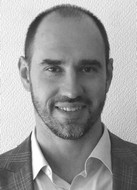Neural-network model of physical loads versus functional activity of blood neutrophils in skilled athletes in off-season
Фотографии:
ˑ:
Teoriya i praktika fizicheskoy kultury №1 2018, pp.53-55
PhD K.P. Bazarin1
Dr.Med., Professor A.A. Savchenko1, 2
1Research Institute for Medical Problems in the North, Krasnoyarsk
2Siberian Federal University, Krasnoyarsk
High physical loads in modern sports are known to increase the exposure to immune system disorders. Subject to the study were neutrophil granulocytes for the reason that the microbe immunity largely depends on phagocytic activity. Сhemiluminescent activity of neutrophil granulocytes may result in a ‘respiratory explosion’ that occurs due to interaction of cells with objects of phagocytosis. Сhemiluminescent process parameters are highly informative as indicators of functional activity of neutrophil granulocytes.
Modern sport medicine gives a high priority to the ways to forecast potential immune system disorders. For this purpose we designed the neural-network model of the physical loads versus the functional activity of blood neutrophils. Subject to the study were 155 athletes active in different sports including 96 males and 59 females of 24.34±3.54 and 23.12±2.3 years of age, respectively. Reference Group (RG, n=101) was composed of the people free of systemic physical workloads (physically inactive) including 53 males and 48 females aged 23.17±2.54 and 22.12±3.01 years, respectively. Average approximation rate (Ā) for the neural-network model was estimated at 2.77% and 2.98% for the males and females, respectively. Therefore, the newly designed neural-network models were found beneficial as verified by the meaningful forecast rates for the blood neutrophil functional activity in athletes.
Keywords: neutrophils, functional activity, physical load, sport.
References
- Bazarin K.P., Savchenko A.A., Aleksandrova L.I. Izmenenie funktsionalnoy aktivnosti neytrofilnykh granulotsitov krovi u kvalifitsirovannykh sportsmenov [Change in functioning of blood neutrophils in skilled athletes]. Byulleten Vostochno-Sibirskogo nauchnogo tsentra SO RAMN, 2013, no. 6, pp. 16-18.
- Bazarin K.P., Savchenko A.A. Osobennosti metabolicheskoy aktivnosti neytrofilnykh granulotsitov u sportsmenov v dinamike trenirovochnogo tsikla [Features of metabolic activity of neutrophils in athletes within training cycle]. Sportivnaya meditsina: nauka i praktika, 2013, no. 1 (10), pp. 246-247.
- Savchenko A.A. Opredelenie aktivnosti NAD(P)-zavisimykh degidrogenaz v neytrofilnykh granulotsitakh biolyuminestsentnym metodom [Bioluminescent method to estimate activity of NAD(P)-dependent dehydrogenases in neutrophils]. Byulleten eksperimentalnoy biologii i meditsiny, 2015, no. 5, pp. 656–660.
- Savchenko A.A., Bazarin K.P. Sostoyanie aktivnosti NAD- i NADF-zavisimykh degidrogenaz v neytrofilnykh granulotsitakh u sportsmenov v dinamike trenirovochnogo tsikla [Activity of NAD- and NADP-dependent dehydrogenases in neutrophils in athletes within training cycle]. Zhurnal Sibirskogo federalnogo universiteta. Biologiya, 2013, no. 6, pp. 151–162.
- Savchenko A.A., Borisov A.G. Osnovy klinicheskoy immunometabolomiki [Fundamentals of clinical immunometabolomics]. Novosibirsk: Nauka, 2012, 263 p.
- Savchenko A.A., Smirnova S.V., Borisov A.G. Soderzhanie ATF i aktivnost NAD(F)-zavisimykh degidrogenaz v limfotsitakh pri immunodefitsit-assotsiirovannykh zabolevaniyakh u prishlykh zhiteley Evenkii [ATP content and activity of NAD(P)-dependent dehydrogenases in lymphocytes in immunodeficiency-associated diseases in foreign residents of Evenkiya]. Byulleten SO RAMN, 2010, no. 3, pp. 33–38.



 Журнал "THEORY AND PRACTICE
Журнал "THEORY AND PRACTICE